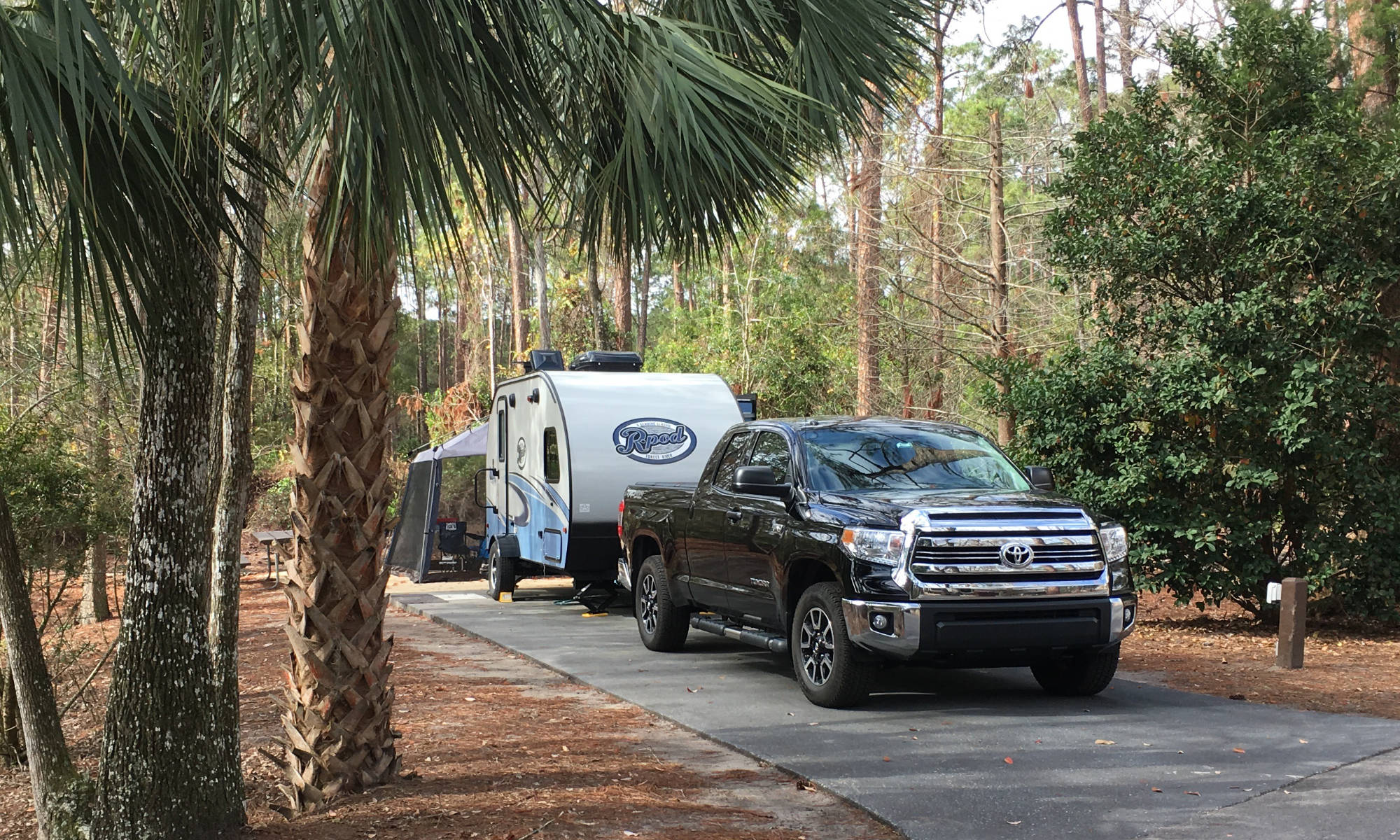This blog covers the latest RV news and travel data and will look at what is now confirmed – a significant drop in RV production volume. Toward the end of the blog, we’ll look at an entity called the RVIA. You may be surprised. Let’s get started with the news.
This Month’s Big Story
Although we have been pointing to a slowdown in RV production for a while, it is now confirmed with travel trailer production volumes dropping to the lowest July numbers since July 2016. While being spun as a managed slowdown, the reality is that the industry over-produced RVs in 2021, thinking pandemic levels were the new norm. The harsh reality is that the decline from late 2018 until the pandemic hit in April 2020 was the trend (slow and downward), with the pandemic giving a lifeline to the industry.
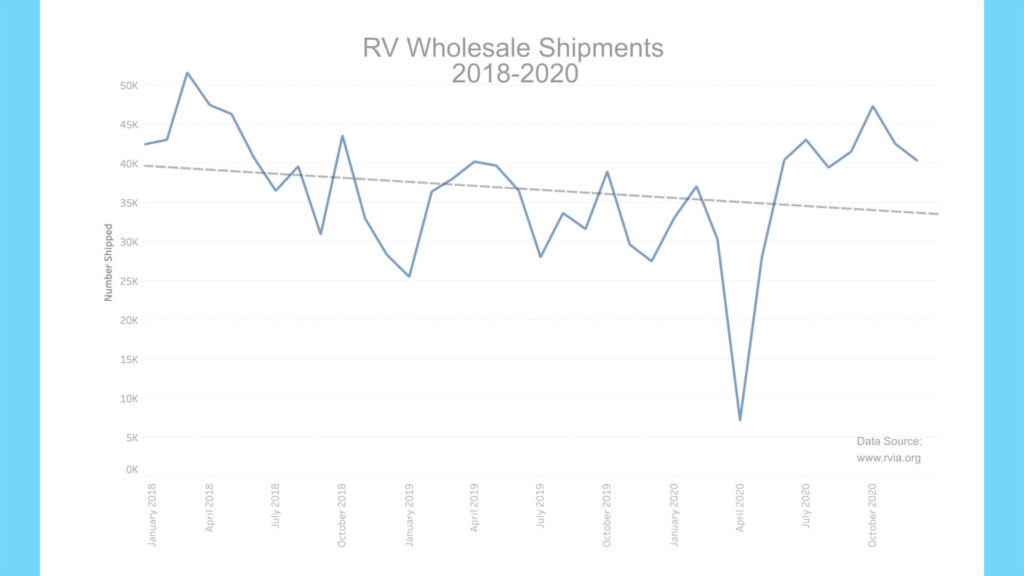
Unfortunately, the industry took the massive uptick in pandemic demand as a signal to overproduce, which is now apparent. Six hundred thousand new RVs shipped in one year (2021) is a lot to sell, and as we will see in a moment, new units simply sat on dealer lots this spring and summer. Also, with the massive increase in production and accompanying ultra-low unemployment rate in Elkhart County, Indiana, quality issues are the natural outcome, given the increased pace of production.
Production Numbers
On August 25th, the RVIA posted the latest RV shipment data for July 2022, and as just mentioned, the numbers show a significant decline in shipments. Only 29,647 RVs were shipped in July, compared to 44,793 in June 2022 (-34%). Travel trailers witnessed the most significant decline, with 19,355 shipped. It was the worst July for travel trailers in the past six years, barely edging out July 2016’s by only 226 units.

Surprisingly, motorhomes, which include Class A, B, and C models, have seen the best July in recent memory, with just under 4,300 units shipped. While Class A and C motorhomes are not near record levels for July, Class B camper vans continue to outpace all prior years with slightly below 1,200 units shipped in July.

RV Trader
New and used RVs for sale on RVTrader.com remain historically high, with new units pulling back slightly this past week. There were 157,419 new units for sale as of August 30th. This is down slightly from the 160,486 units a month ago, which is alarmingly high for this time of year. While new units for sale are staying stubbornly high, used units for sale are also remaining high, at 52,474 units. This is now the fifth month in a row with used for-sale units at greater than 50,000. This time last year, the number of used RVs for sale was roughly 41,000. So, there has been an increase of just over 11,500 used RVs for sale year over year.

RV Quality Concerns
Meanwhile, manufacturing employment levels in Elkhart County, Indiana, have started to pull back with the decreased shipment numbers. There were 77,800 people employed in manufacturing in July, according to the Bureau of Labor Statistics. This is down from the record of 79,200 in June 2022. This gives Elkhart an unemployment rate of 2.7% for July 2022, up from 2.3% in June and up from 1.8% in May.
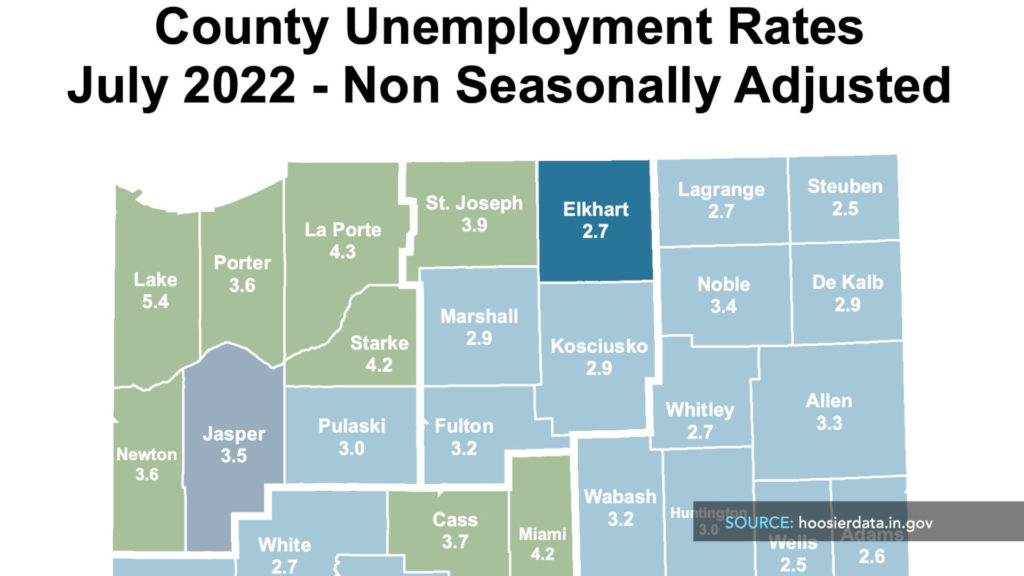
Spotlight
Before learning about the RVIA, did you know we have an Amazon storefront with over 200+ curated RV-related items? From RV tools and gadgets to dump station supplies to an entire section on getting started with RVing, our storefront makes it easy to find outstanding RV supplies quickly. Head to johnmarucci.com and start shopping from our Amazon store link. We get a small commission with each purchase, which is a great way to support our efforts at no additional cost to you.
RVIA
The RVIA is the Recreational Vehicle Industry Association and primarily represents the interests of the RV industry. Every RV manufacturer that is part of the RVIA pays about $120 per RV sold. The RVIA website states that its organization represents more than 98% of all RV production. Look near the door of your RV, and you will likely see an RVIA seal.

If you do the math, given 400-500 thousand RVs sold yearly, we’re talking about a $40-50 million-dollar annual budget. I am sure this is an oversimplification, but anyway you slice it, it is a budget in the 10s of millions of dollars annually.
Of course, manufacturers don’t pay the roughly $120 per RV to the RVIA. That cost gets passed on to the customer. So, you, the customer, fund the RVIA with every RV purchase. On the price of a new RV, the $120 to the RVIA is a drop in the bucket, but for the RVIA, it adds up to a lot of money given the volume of RVs sold.
Since you are funding the RVIA with each RV purchase, you, as the customer, would expect to be represented by the RVIA with manufacturers. This is, in fact, one of the functions of the RVIA, to ensure specific quality standards are being met by RV manufacturers who are part of the RVIA. According to the RVIA website,
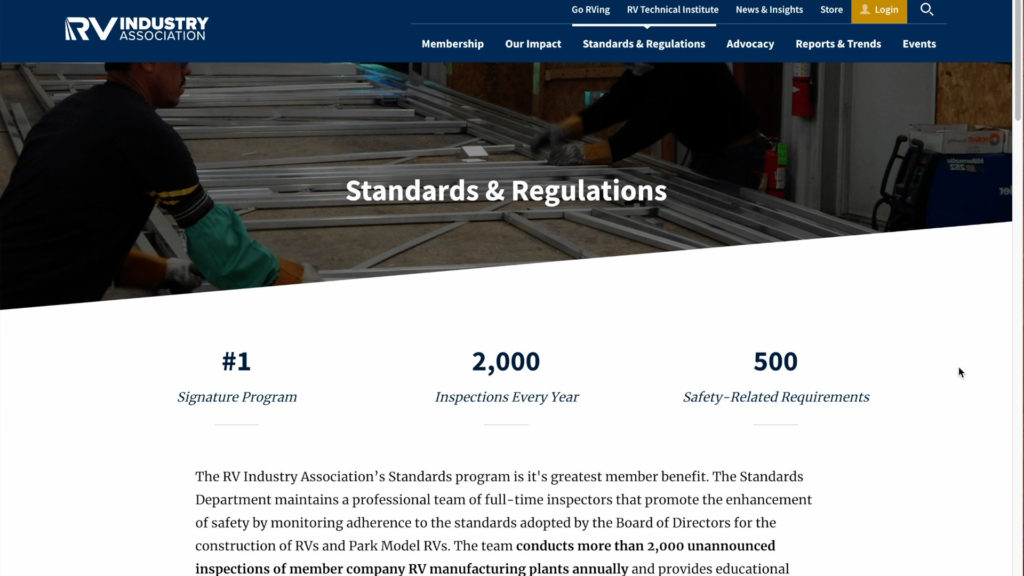
“The RV Industry Association’s Standards program is it’s (sic) greatest member benefit. The Standards Department maintains a professional team of full-time inspectors that promote the enhancement of safety by monitoring adherence to the standards adopted by the Board of Directors for the construction of RVs and Park Model RVs. The team conducts more than 2,000 unannounced inspections of member company RV manufacturing plants annually and provides educational resources and hands-on training to manufacturer members to support their commitment to comply with these adopted codes and standards. RV Industry Association inspectors walk every station along the production line, spot checking representative RV units for compliance with over 500 safety-related standards requirements, talking to line employees and conducting hands-on discussions about these standards.”[1]
Of course, the RVIA is primarily for the benefit of its industry members, and this is where things get a bit more disturbing. Advocacy is one of the primary purposes of the RVIA. This means representing the RV industry’s interests with elected officials at the federal and state level. This is code-speak for lobbying those in power to enact, change or prevent laws so that the laws would benefit RV manufacturers. It only takes a few minutes on the RVIA website to see this articulated…

The RVIA’s Government Affairs mission statement: “Advocates for the RV industry at the federal and state levels to create a favorable business environment and make it easier for consumers to purchase, drive, and own an RV.”
An example of the RVIA’s stance on such items is its take on lemon laws: Lemon laws generally allow a consumer to return a vehicle if it is, well, a lemon. If an auto manufacturer produces a lemon of a car riddled with problems immediately, the purchaser can use a lemon law to get a refund. Lemon laws are consumer friendly and provide a significant incentive for manufacturers to improve initial vehicle quality. They also increase costs to the manufacturer.
Here is the RVIA’s stance on lemon laws: “Lemon laws were developed to assist consumers when the automobile they purchased as a necessary investment for travel to school, work, shopping, and other transportation needs develops defects that cannot be repaired or remedied to conform to the vehicle warranty.”
There is a lot said in this one sentence. The opinion of the RVIA is that automobiles are a “necessary investment for travel” to the consumer. This is key to understanding their argument against lemon laws for RVs.

“Motorhomes are discretionary purchases that are not the primary means of transportation for such daily activities. Instead, motorhomes are designed to provide temporary living quarters for recreational, seasonal, camping, or travel use. Automobile lemon laws are not written to address living quarters items such as appliances, roofing, furniture, or plumbing systems.”
So, according to the RVIA, RVs are not necessary but “discretionary purchases that are not the primary means of transportation” and are “designed to provide temporary living quarters for recreational…use”. The RVIA is saying that lemon laws for automobiles are necessary but unnecessary for RVs because cars are essential transportation, and RVs are optional. The problem is that neither assumption is valid. Cars are not always needed, and RVs can be people’s only means of transportation. The rich guy with four cars certainly doesn’t “need” but one to get groceries and the couple living full-time in their motorhome likely needs it to get groceries.
This is all to say that one of the purposes of the RVIA is to lobby against pro-consumer lemon laws, laws that would undoubtedly increase the initial quality of RVs and benefit RV buyers. This would push significant costs to the manufacturer that likely would ripple through to how line workers are paid, how fast RVs are built, and how customers are treated after the sale. It would give the consumer some measure of recourse if the RV just purchased is riddled with issues—something many first-time RV purchasers don’t understand.
Something is troubling to me about paying a mandatory fee to an organization that willfully works against my best interests as an RV buyer. Of course, if the RVIA ever goes looking for a bailout for manufacturers, they have gone on the record saying RVs are not essential.
AAA
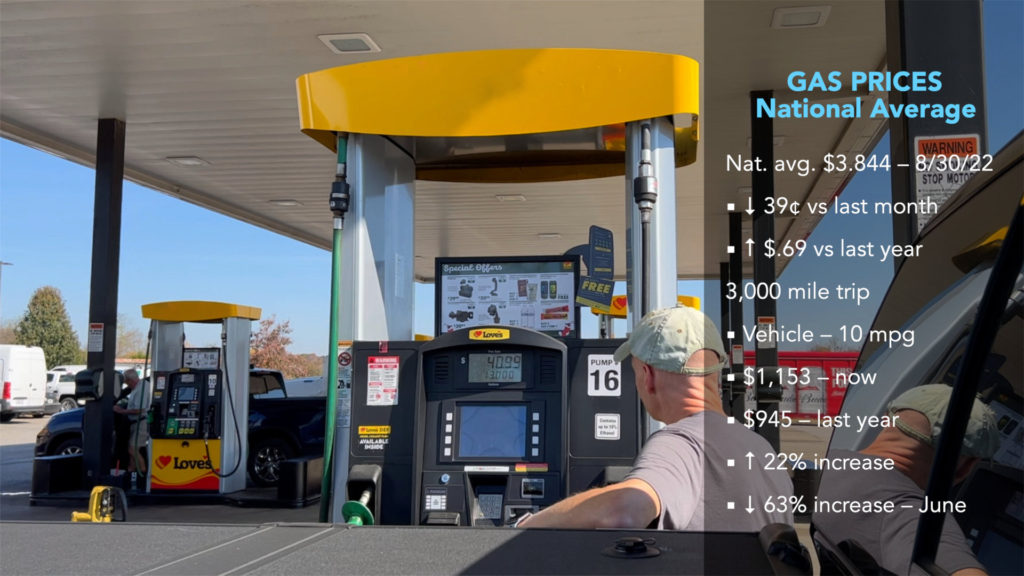
To end on a better note, according to AAA, gas prices have come down below $4 per gallon nationwide but are not retreating at the same pace as in July. The current nationwide price as of August 30th was $3.844 per gallon, almost 39 cents lower than a month ago and $.69 higher than a year ago. An RV trip of 3,000 miles at 10 mpg would cost $1,153 now vs. $945 a year ago, about a 22% increase. This compares to an increase of 63% in mid-June.
That’ll do it for the news. All the best in your camping endeavors!
As always, thanks to our fans who support our efforts by starting their shopping from our Amazon Storefront and by their generous financial support by using the THANKS feature located under each YouTube video ($ within the Heart icon). Your support is greatly appreciated!
